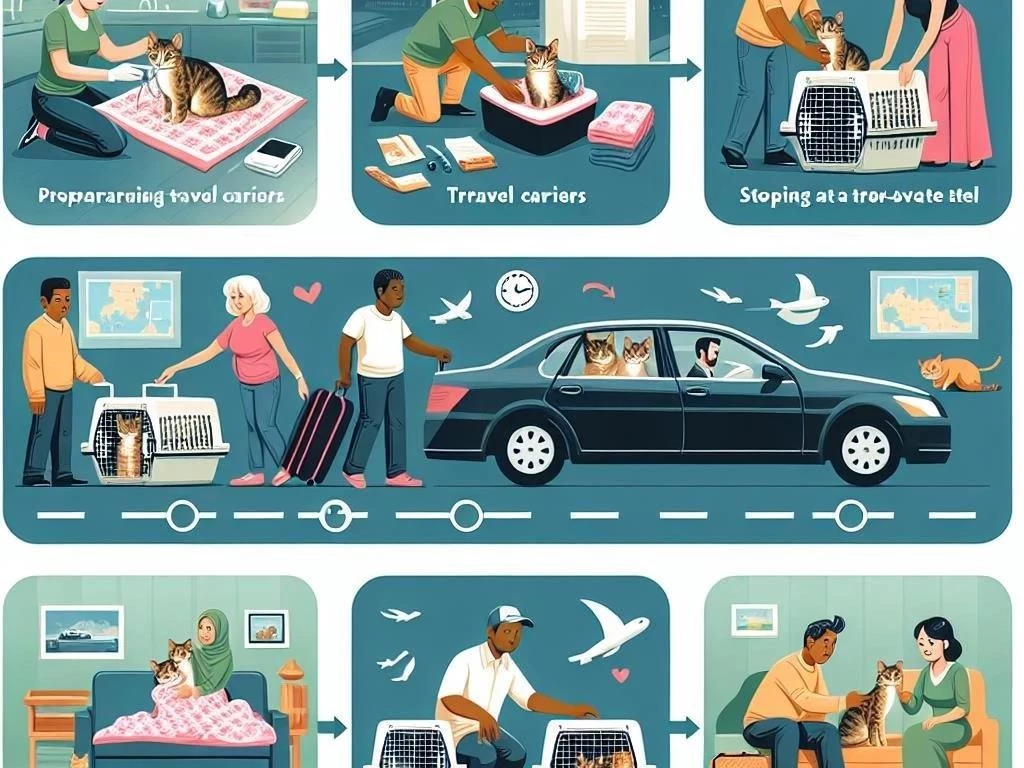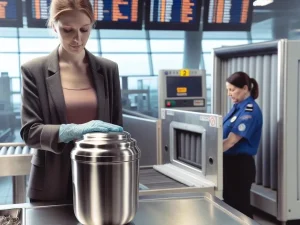How to Transport Cats Across Country
Transporting cats across the country requires careful planning. Consider your feline’s comfort, safety, and health while navigating pet relocation challenges. Understanding travel tips for cats ensures a smooth experience during long-distance travel.
Preparing for Your Cross-Country Move
When preparing for your cross-country move with cats, start by scheduling a veterinary check-up to ensure your feline friends are healthy for travel. Obtain any necessary vaccinations and documentation, as pet travel regulations may vary by state. Next, invest in quality cat carriers or travel crates that provide enough space for your cats to stand, turn around, and lie down comfortably. Make sure they are well-ventilated and secure during the journey.
Acclimating pets to their carriers prior to the trip will help reduce travel anxiety in cats. Introduce the carriers at home, allowing your cats to explore and feel safe inside them. Additionally, plan a route that includes pet-friendly accommodations to ensure comfortable stops along the way. Consider travel supplies like blankets, toys, and familiar items to provide comfort during your journey. By taking these steps, you’ll ensure a smoother and more enjoyable experience for both you and your feline companions during interstate travel.
Choosing the Right Cat Carrier
Selecting the right cat carrier is crucial for successful long-distance travel. First and foremost, ensure that the carrier is spacious enough for your cat to stand, turn around, and lie down comfortably. A well-ventilated carrier, with secure locking mechanisms, is essential for feline safety, especially during interstate travel. Opt for carriers made from sturdy materials that can withstand the rigors of animal transport.
Consider the size and weight of the carrier, as you’ll need to transport it easily during your journey. Look for carriers with handles or wheels for added convenience. Additionally, choose a carrier that fits within travel regulations for pets, as some airlines and accommodations have specific requirements. To help your cat feel more at ease, choose a familiar and comfortable carrier, and add blankets or toys from home. This will aid in reducing travel anxiety in cats. Lastly, always test the carrier before embarking on your journey to ensure your cat feels secure and comfortable inside it.
Ensuring Feline Safety During Travel
Ensuring feline safety during travel is paramount when transporting cats across the country. Start by securing your cat in a sturdy, well-ventilated carrier, as it provides a safe space during the journey. Avoid allowing your cat to roam freely in the vehicle, as this can lead to distractions and potential accidents. Use a safety harness or leash when taking breaks, ensuring your cat remains safe while outside the car.
Monitor your cat’s behavior continuously for signs of stress or anxiety, and provide comfort through familiar items like blankets or toys. Keep the vehicle temperature at a comfortable level, as extreme heat or cold can affect your cat’s well-being. Make regular stops to check in on your feline friend, allowing them to stretch and explore in a secure area. Additionally, ensure that your cat is properly hydrated throughout the journey, offering water during breaks. By prioritizing feline safety, a stress-free travel experience can be achieved, making the cross-country move smoother for both you and your cat.
Planning a Stress-Free Travel Route
Planning a stress-free travel route is essential when transporting cats across the country. Start by mapping out your journey, taking into account the distance, travel time, and potential stops. Identify pet-friendly accommodations along the way, as staying in these places will provide comfort for both you and your feline companions. Make reservations in advance to avoid last-minute hassles and ensure a smooth transition during your trip.
Consider breaking the journey into manageable segments, allowing for rest stops where your cat can stretch and explore safely. Incorporate scenic routes to make the drive enjoyable while minimizing the stress associated with long stretches of highway. Familiarize yourself with local veterinary clinics along your route, in case of emergencies or health concerns. Additionally, always check for pet travel regulations in each state you pass through to avoid unexpected complications. By thoughtfully planning your travel route, you can create a more pleasant experience, reducing travel anxiety in cats and ensuring they feel secure during your cross-country move.
Travel Supplies for Cats
When preparing for a cross-country journey with your feline companions, having the right travel supplies for cats is essential to ensure their comfort and safety. Start with a secure cat carrier that meets your cat’s size and comfort requirements. Additionally, pack familiar items such as blankets or toys to help ease travel anxiety in cats and provide a sense of security during the trip.
Don’t forget essential feeding supplies, including travel-friendly food containers and a portable water bowl. Keeping your cat hydrated is crucial, so consider packing bottled water or a hydration solution. Include a sufficient supply of your cat’s regular food to prevent digestive issues, along with some treats for positive reinforcement during breaks.
Bring a first-aid kit specifically for pets, including basic medications and any prescriptions. Always have essential documents, such as vaccination records and identification, readily accessible. By gathering the right travel supplies, you can create a stress-free travel environment and ensure your cat remains comfortable throughout the journey.
Acclimating Your Cat for Long-Distance Travel
Acclimating your cat for long-distance travel is crucial to ensure a smooth journey when relocating across the country. Start by introducing your cat to their travel carrier well in advance. Place the carrier in a familiar area of your home, allowing your cat to explore it freely. Add comfortable bedding and favorite toys to create a positive association. Gradually, encourage your cat to spend time inside the carrier, rewarding them with treats and praise.
Familiarize your cat with car rides by taking short trips around your neighborhood. This helps them adapt to the sensation of traveling and reduces anxiety during the actual journey. During these practice runs, observe your cat’s behavior and address any signs of stress by providing comfort and reassurance. Also, consider using calming products such as pheromone sprays or anxiety wraps to ease their nerves. Lastly, maintain a consistent routine for feeding and playtime, even while traveling. This stability will help your cat feel more secure and adaptable during the long-distance move.
Feeding and Hydration Tips for Cats on the Road
Feeding and hydration are vital components to consider when transporting cats across the country. Start by ensuring your cat is well-fed and hydrated before embarking on your journey. Avoid feeding them right before travel to minimize the risk of motion sickness; instead, provide a meal a few hours beforehand. During the trip, use portable food containers for easy access to your cat’s regular food, and offer small portions at regular intervals.
Hydration is equally important, especially during long drives. Always have a portable water bowl available, and offer fresh water during breaks. If your cat is hesitant to drink, try adding water to their food or offering ice cubes as a fun alternative. Monitor your cat’s water intake and ensure they remain hydrated throughout the journey. If traveling in warm weather, be especially vigilant, as dehydration can occur quickly. Lastly, avoid giving your cat rich or unfamiliar foods during the trip, as these can lead to digestive issues and discomfort.
Understanding Pet Travel Regulations and Insurance
Understanding pet travel regulations and insurance is essential for a smooth cross-country move with your cat. Different states have varying requirements regarding vaccinations, health certificates, and pet identification. Research the regulations for each state you’ll be passing through, and ensure that your cat meets all necessary health requirements. This might include obtaining a veterinary check-up and documentation proving vaccinations are up to date.
Additionally, consider investing in pet travel insurance to protect against unexpected events. Insurance can cover emergencies, veterinary care, or cancellations, providing peace of mind during your journey. Before traveling, familiarize yourself with your insurance policy details, ensuring you understand what is included, such as coverage for lost pets or medical emergencies.
Always carry your cat’s essential documents, including vaccination records and identification, in an easily accessible location. This preparedness will help avoid complications during checkpoints or lodging arrangements. By understanding regulations and securing insurance, you can confidently navigate the challenges of transporting your cat across the country.














Post Comment